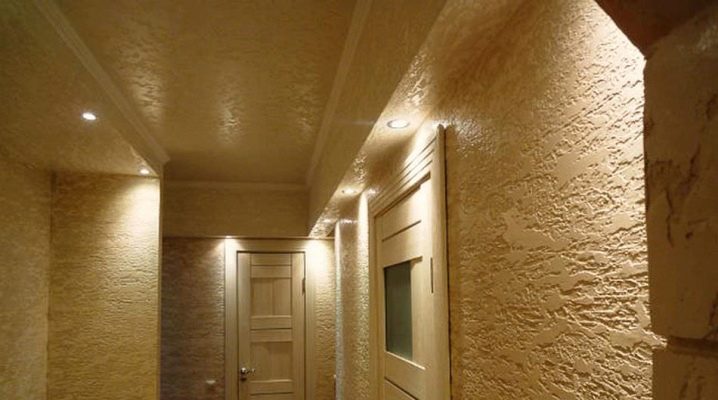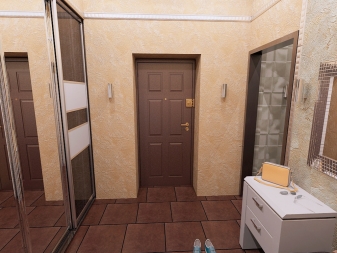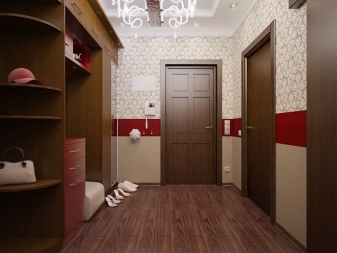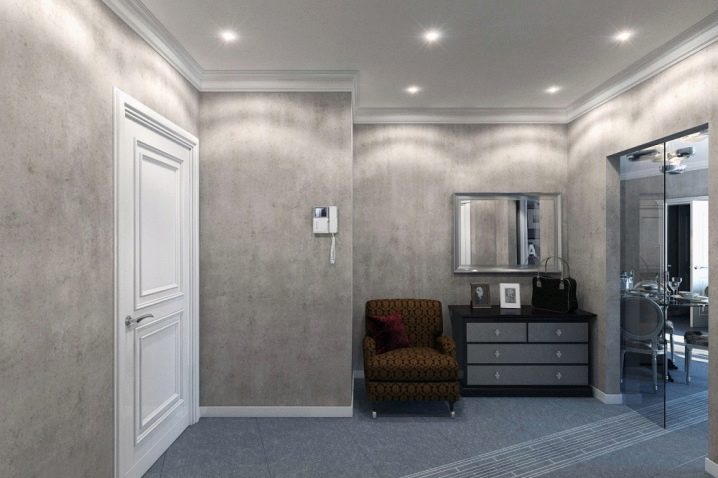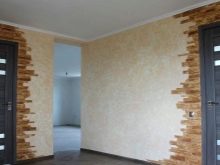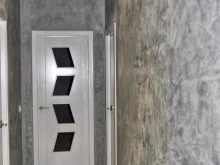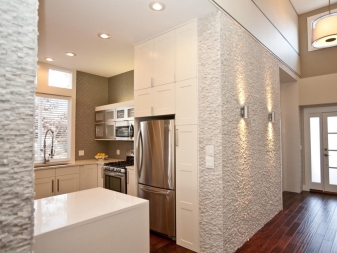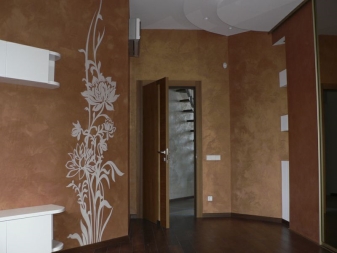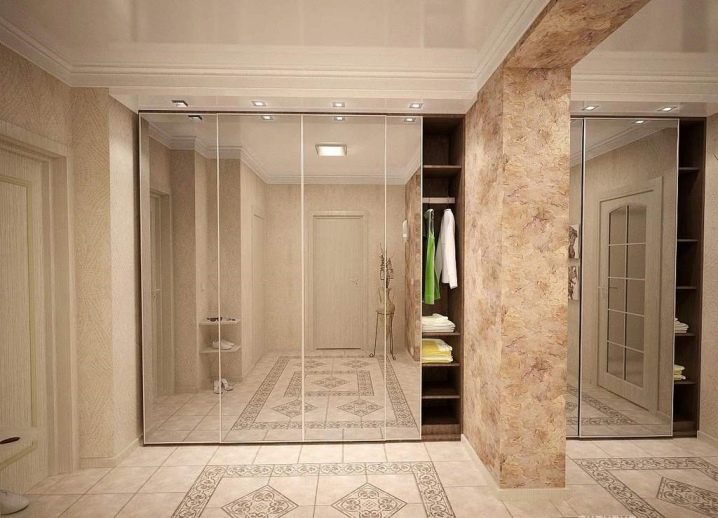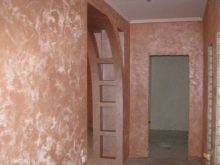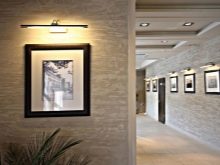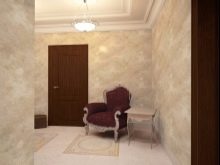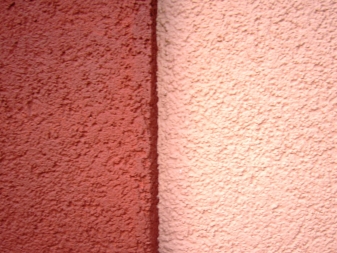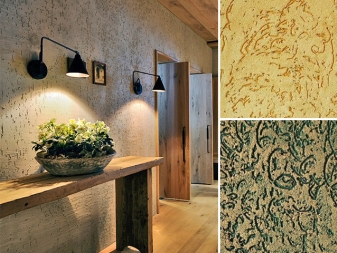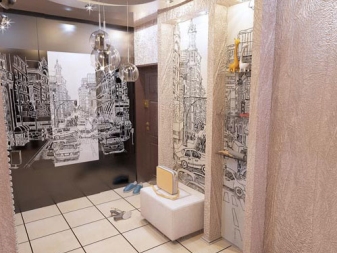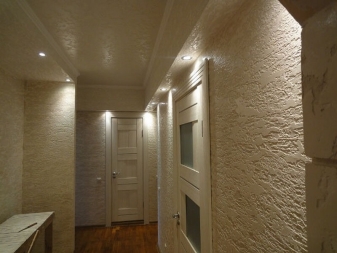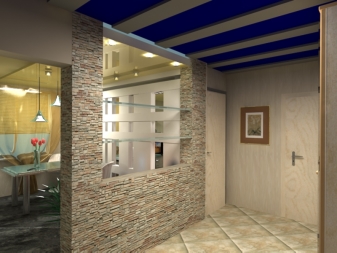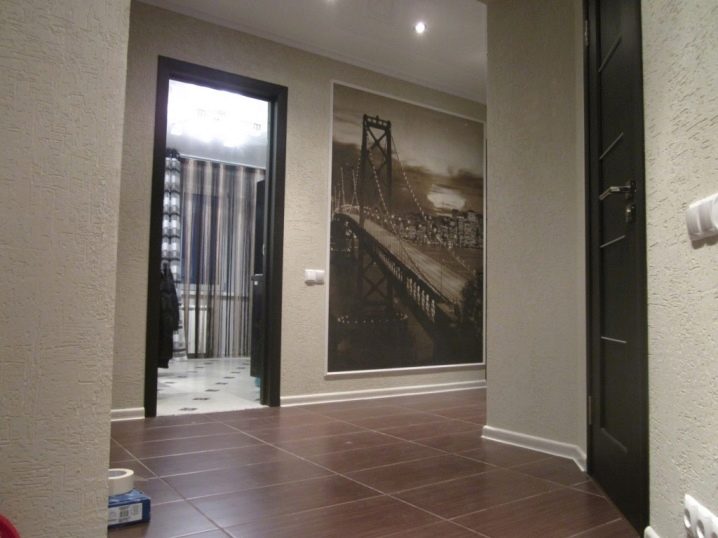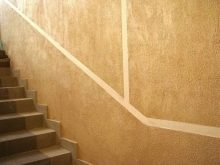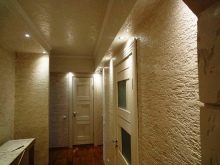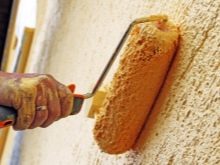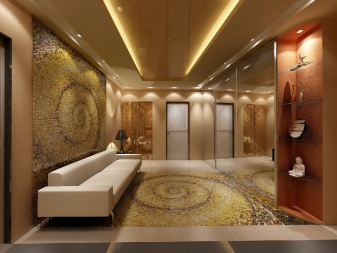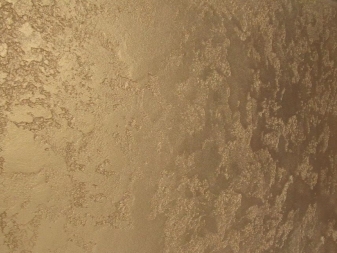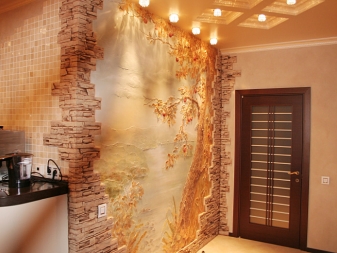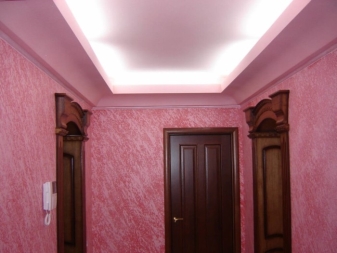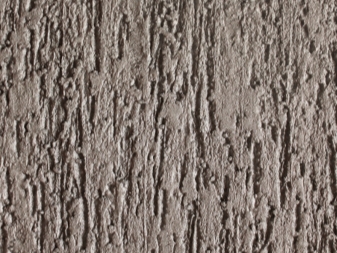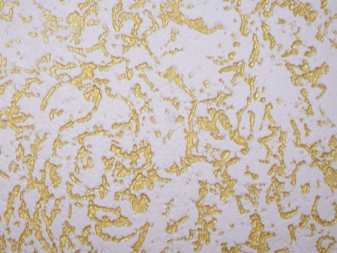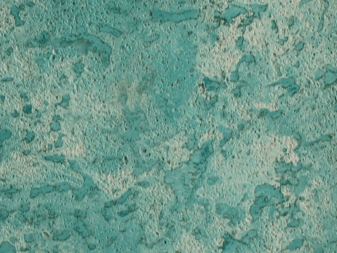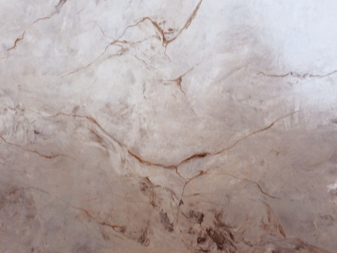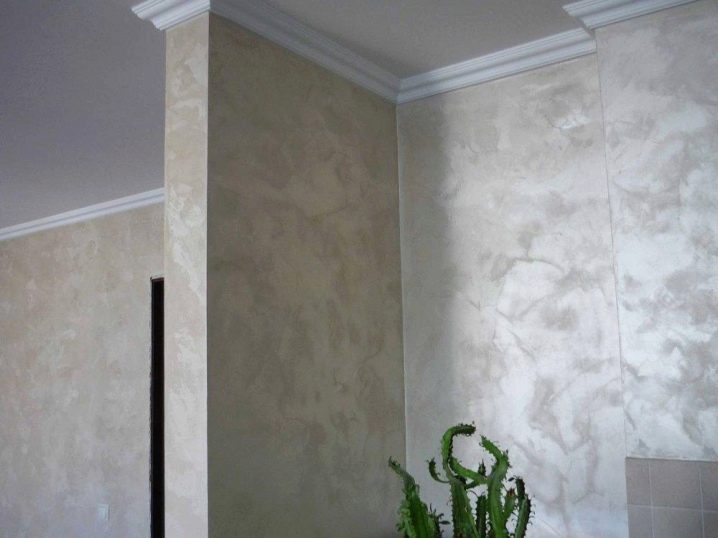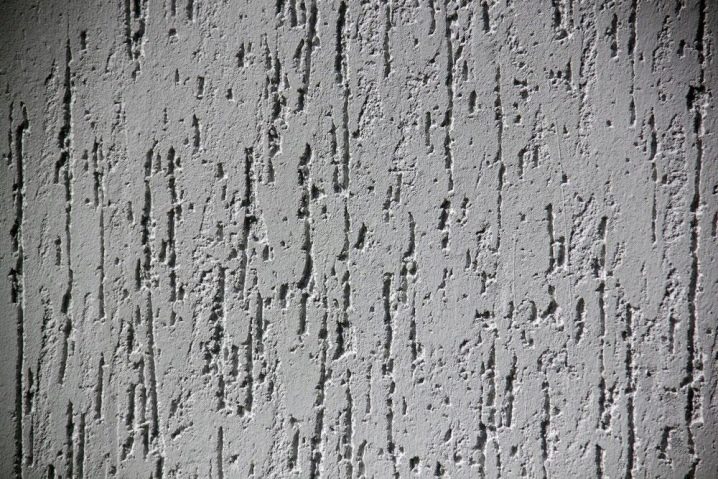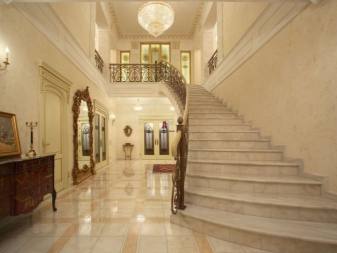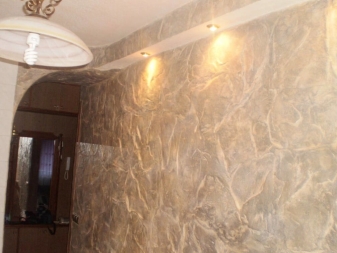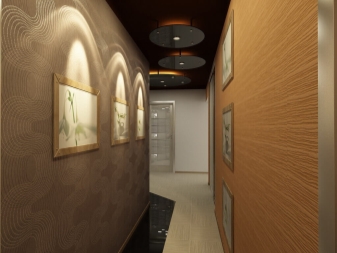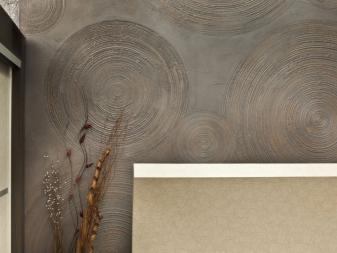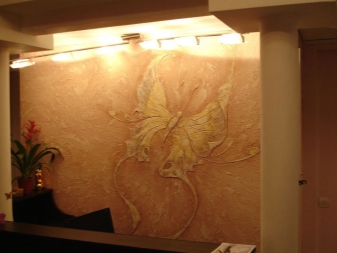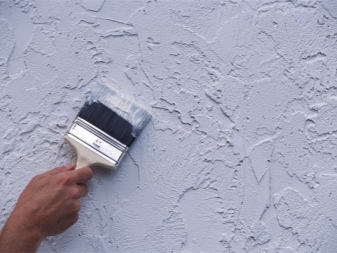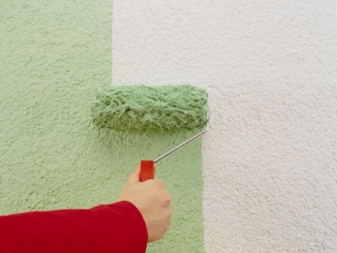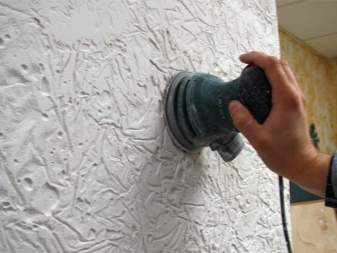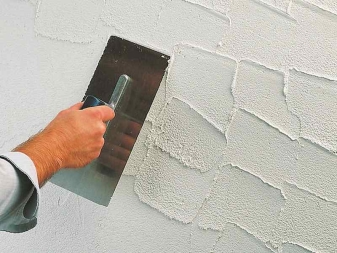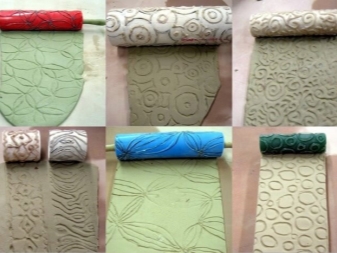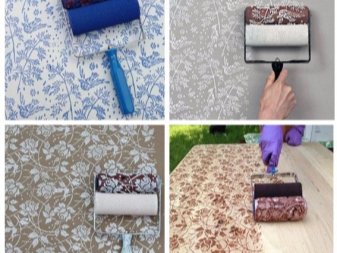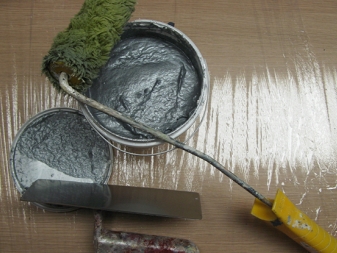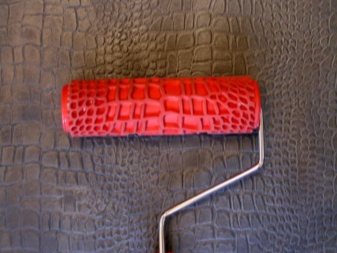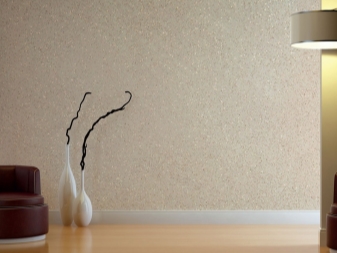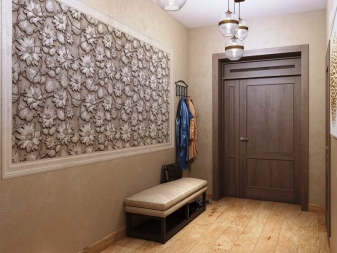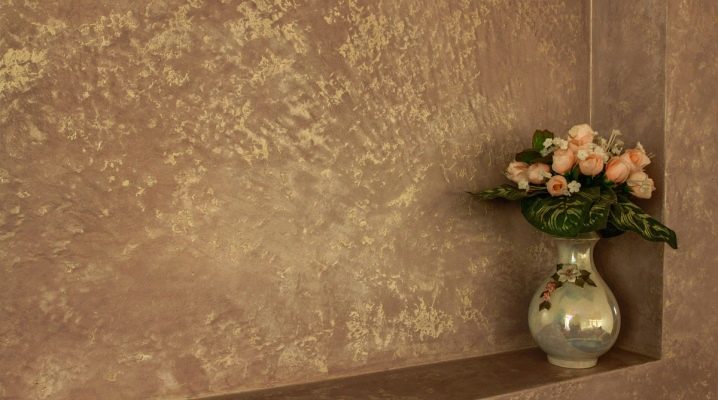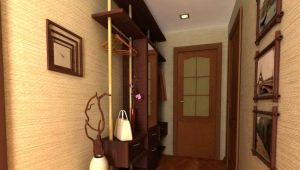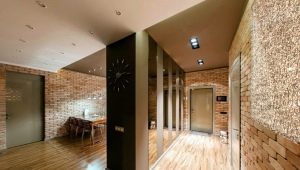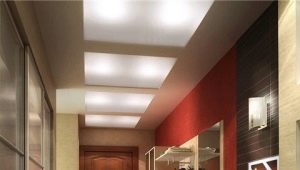Decorative plaster in the hallway interior
The modern interior is the embodiment of unusual design ideas, thanks to which the house turns into a multifunctional, practical and cozy island of life. The design of housing should be treated with great responsibility, because each room in the house is unique in its own way, since it performs a specific purpose. The hallway, which is often called the “face” of the owners, deserves special attention.
From the proper organization of its space and wall decoration, depends not only the general type of housing, but also gives the impression of the owners of the house, their tastes, preferences.
Special features
Recently, decorative plaster has found wide application in the finishing design of the hallways. This material is unique in structure and is well suited for both apartments and houses. Thanks to a huge choice of colors and textures, decorative plaster in the interior of the hallway allows you to create a calm homely atmosphere, filling the room with comfort.The widespread use of decorative plaster is also due to its high performance, unusual appearance and choice of colors.
This material is a modern finishing product, which is decorated with walls and ceilings. The plaster consists of natural and artificial ingredients and is used in decorating to create embossed surfaces, unusual compositions and drawings. Due to the unique structure, the building material allows you to hide the cracks, removes the defects of the walls, their irregularities.
Decorative plaster is presented in a large assortment of colors. It happens both monophonic, and with addition of copper, gold, silver fibers. The walls, decorated with it under mother of pearl, also look unusual.
The unusual texture of the material makes the design of the hallway interesting, allowing you to complement it with various imitations in the form of fabrics, suede, paper, palm leaves, velvet and natural stones. The plaster is applied in different ways, so the surface can be both smooth and relief. In addition, decorative plaster has many advantages:
- Durability and practicality. With proper observance of the application technique, the surface of the walls or ceiling is excellent, this coating does not give chipping, cracks, does not crumble. The material is characterized by high resistance to external influences.
- Disguise. Thanks to this product, you can hide all cracks and eliminate irregularities.
- Multifunctional. Plaster is suitable for finishing all kinds of surfaces. It can be applied both on concrete and on wood, brick.
- Resistance to moisture and temperature extremes.
- Environmental friendliness. The composition of the product includes components that do not harm human health.
Despite the huge presence of positive characteristics, plaster has drawbacks. First of all, this is a high price, which includes the cost of the material and the performance of finishing work. In addition, plaster is difficult to dismantle, and when applied, the surface must be carefully prepared and impregnated with a special primer.
Kinds
To date, the surface of the walls and ceiling can be decorated in different ways, applying for this a certain class of plaster.The material with the usual composition is used in the case when the surface needs to be given a smooth surface with an ideal structure, and to obtain a gloss, relief effect and imitation of natural materials, plaster with a special composition is chosen.
Therefore, depending on the type of filler, the following types of decorative plaster are distinguished:
- Structural
- Textured
- Venetian
The first and second variants of the material belong to the relief types of plaster, as they create roughness on the surface. As for the Venetian finish, it is used to obtain a smooth structure. All of the above products are characterized by durability, durability and safety in operation.
Decorative plaster is also distinguished by the presence of a binder in its composition and is divided into the following types:
- Acrylic. The main ingredient of the material is acrylic resin, thanks to which an elastic layer is applied. In addition to organic elements, in this plaster there are also artificial pigments that provide the solution with different colors.
- Mineral The basis of the material laid cement.The product is produced in a dry form, it is diluted with water before finishing. Standard shades of such plaster are considered light colors.
- Silicate. Its binding component is liquid glass. Differs in the increased durability and resistance to fungi, a mold and moisture. The term of operation of such finishing can exceed 50 years.
- Silicone. It is made on the basis of synthetic pitches. It does not attract dust, is not afraid of moisture and is resistant to ultraviolet rays. Available in ready-to-work mixes, presented in a wide selection of colors.
Textured plaster is considered the most popular in decorative finishing. It is characterized by a high bond and provides a coarse surface structure. Fillers of this product are mineral chips, wood, small stones and natural flax fibers.
It covers concrete, wood, brick and plastered surfaces. Due to the fact that the composition of textured plaster includes unique particles, it allows you to hide all the irregularities in the walls and ceilings. Before the coating, as a rule, it is not necessary to additionally prepare a working base; it is enough to clean the area for decoration and dry it well.After finishing, the textured layer becomes hard, does not let in moisture and air, so the resulting surface can be imitated with fabric, stone, leather or wood.
Textured plaster is represented by the following subspecies:
- The Lamb It is a grainy stones of various sizes.
- Bark beetle Allows you to get original compositions with a furrowed texture.
- Fur coat The appearance of the finish resembles a small "pile".
Good qualities are also characterized structural plaster. Its main advantage is considered a thin layer. The composition of the material includes elements of quartz and marble chips. After applying the plaster surface becomes heterogeneous granular texture. The material is good for decorating the hallways, it is odorless and dries quickly.
Special attention deserves Venetian plaster. It is a coating consisting of multiple layers. It is made on the basis of slaked lime and marble chips. After completing such a finish, the surface of the walls visually resembles onyx or marble.
To design turned out beautifulVenetian plaster requires special material and craftsmanship. It is applied in six layers, each of which is thoroughly dried. As a rule, this type of decoration is chosen for classical and antique styles. It should be noted that in addition to the stone surface, the material can give the walls a surface that imitates precious metals, if painted with color pigments.
In addition to the main types of plaster, in modern construction also use its unusual varieties:
- Colored. Consists of marble chips and acrylic. It is well applied on walls, characterized by durability and moisture resistance. Her palette is presented in 15 shades. Apply in one layer on a well-prepared base.
- Scooter. Made from natural fillers. After drawing creates the effect of small grooves, channels.
- Plastic latex. Gives the surface a light gloss, looks like a natural stone with reliefs. It washes well, does not form cracks. The material can be painted in different colors.
- Silk. Visually nothing is different from natural fabric.It consists of pearl yarn, imitating silk play. It can be painted in any shade. Not afraid of moisture, so easy to clean.
- Rain After decoration, the coating acquires a transparent structure with a pearl shimmer. It consists of fine sand, available in basic colors, but it can be easily tinted.
Which is better
In the decoration of the hallway it is recommended to use plaster, which has not only an attractive appearance, but also has high performance. In this case, textured plaster is considered the right choice. Its main advantages include the following:
- Easy to care. Quickly cleaned from dust and dirt. Fire resistant and not afraid of moisture.
- Resistant to mechanical damage.
- Huge selection of colors and textures.
- Quickly restored.
- It is well applied on any surface.
Depending on the style in which the entrance hall will be decorated, it is possible to select different types of this plaster. Most often in the decoration of the hallways they prefer to use bark beetle, it is distinguished by original relief, it is perfectly combined with any style.
How to choose
Before you begin the finishing work in the hallway, you should first select the material for the decoration. To date, the construction market has a wide range of decorative plaster, but to get it right, it is worth considering the following criteria:
- Filler
- Binding component
- Way of laying
In addition, it is important to pay attention to the products for interior decoration, as the plaster for exterior work is significantly different in appearance and properties.
For the design of an apartment or house is well suited texture with pictures. Before buying, it is advisable to look at samples of the material and present the future look of the hallway in the new scenery. It is also important to take into account the technical characteristics and features of the room.
How to apply
Decorative plaster, like other building materials, requires proper work and technology, so before you start finishing, you must carefully prepare the surface of the walls: to do this, they are completely cleaned to the ground, then dust is removed from the room, it is well vacuumed and wiped with a damp cloth. To prevent material from falling on the floor during repairs, all open spaces in the room are covered with foil. Then the walls are treated with a primer (it will provide further better adhesion of the solution to the surface) and choose the color of the future composition.
It is important to remember that the plaster is applied on a light base. The solution is applied to the working area and gently level with a rubber spatula.
Then you can make a texture or drawings, for this special tools are sold in the form of rollers with ready-made patterns. When the first layer has dried, proceed to the coating of the second layer. It is important that the solution is applied thinly, otherwise the relief will be inconspicuous.
If the first layer of finish for the walls should be necessarily light, then the second one can be chosen darker, as this will help to give the painted texture a volume. After applying the relief you need to think about the safety and durability of the picture. For this, an additional sealant is used, the composition is coated with it and they are waiting for complete drying. Due to the rich texture and variety of colors of the material, you can create unusual and original patterns with your own hands.
Options in the interior
Making a hallway requires a special approach.Depending on her style, an appropriate type of coating is selected on the walls. Designers recommend using monochromatic bark beetle plaster for these rooms; it can also cover surfaces in the corridor.
Beautifully look in the hallway decorations, imitating the laying of stone or brick, at the same time, to get an unusual look it is best to decorate them with delicate ornaments or engravings.
If the room is decorated as modern, for the walls you can choose bright compositions consisting of contrasting colors. As for country and Provence, they are suitable light unobtrusive tone.
Tips from the designer on the choice of decorative plaster can be viewed in the video below.
